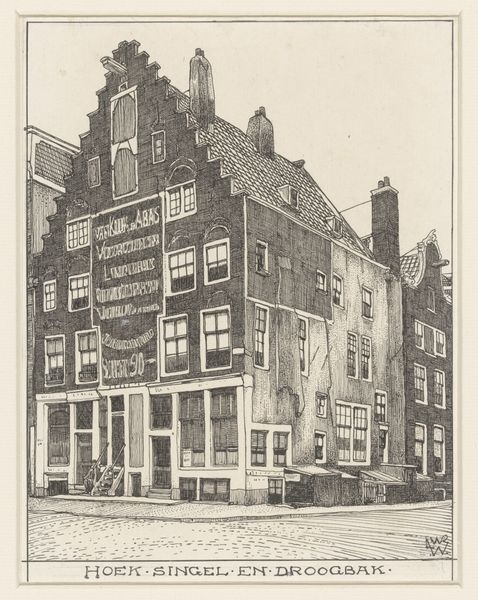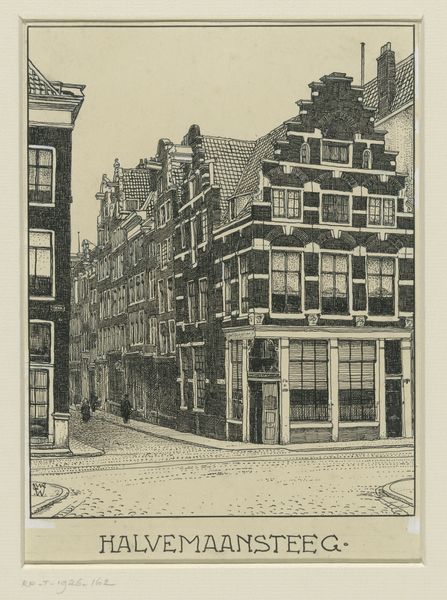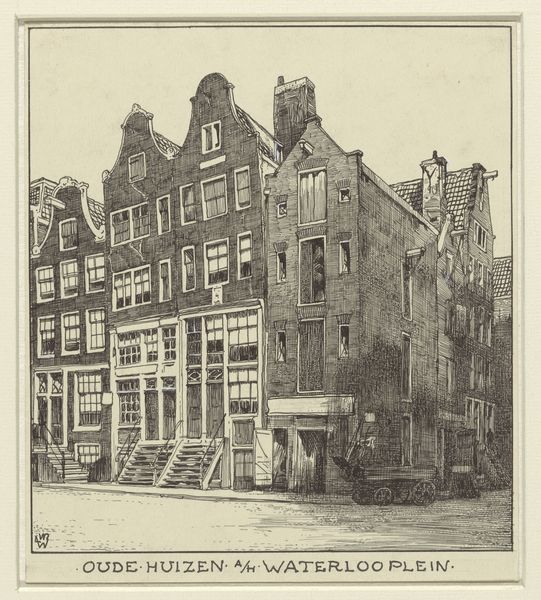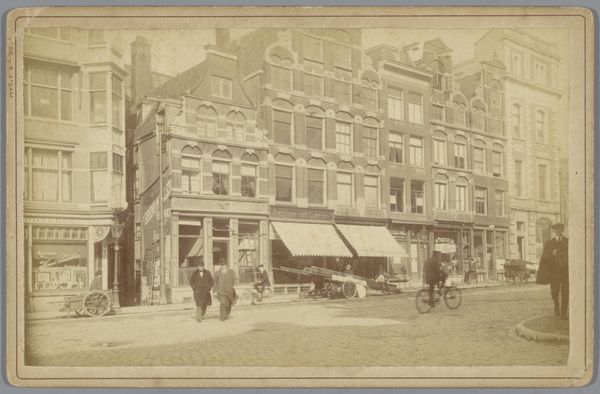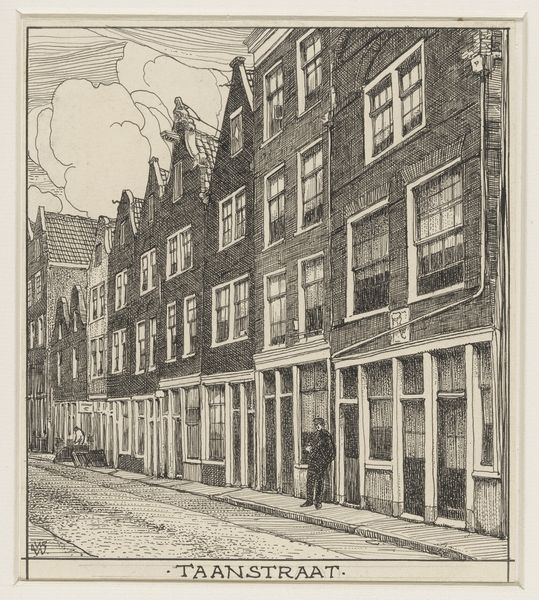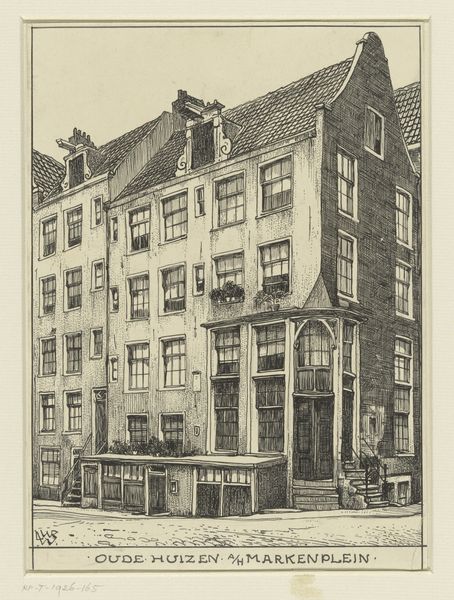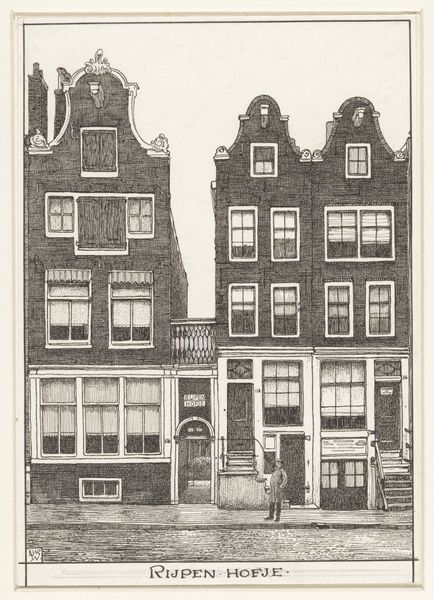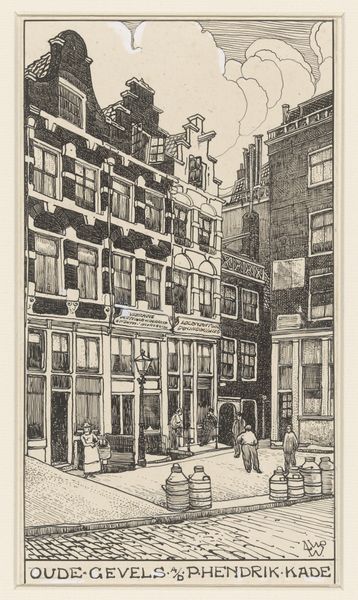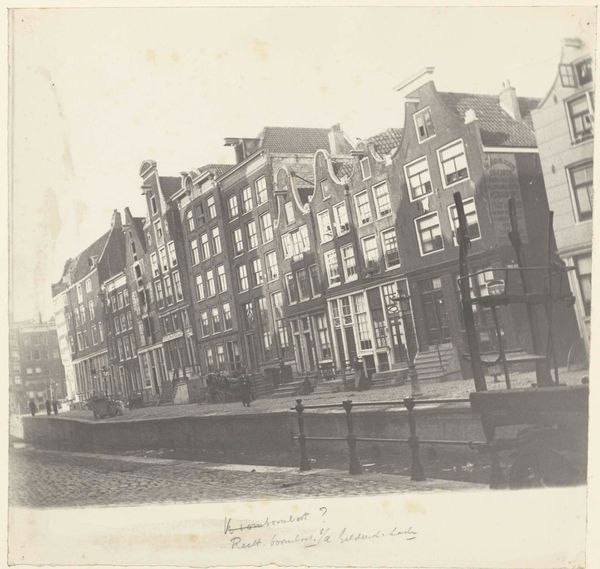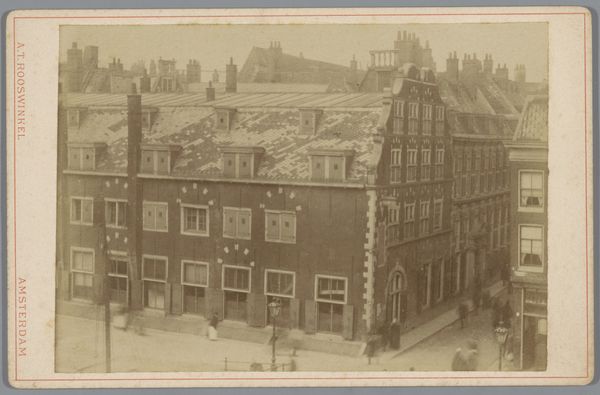
drawing, print, ink
#
drawing
# print
#
ink
#
cityscape
#
street
Dimensions: height 174 mm, width 186 mm
Copyright: Rijks Museum: Open Domain
Curator: Instantly, there's a feeling of quiet dignity in this scene; the lines are so precise, almost like a lovingly crafted architectural model. It's so precise it feels still, even hushed. Editor: Well, let me introduce you to "Oude Gevels aan het Rokin te Amsterdam," or "Old Facades on the Rokin in Amsterdam." This cityscape comes to us through the hand, eye, and mind of Willem Wenckebach and made with ink, somewhere between 1870 and 1926, judging from the work's characteristics. It depicts, rather straightforwardly, old facades in Amsterdam, located on the Rokin. Curator: Straightforward, maybe! But what’s being preserved here? You feel this respect for the history embedded in these buildings; that etched line has intention and is a tool in service to history. It asks us what the place of heritage in our lives is today. Editor: Absolutely, the image raises compelling questions around architectural preservation, and its presentation and distribution as a print underscore how such themes could reach a wide audience in that period. But beyond individual nostalgia, these streetscapes came to represent civic identity as Amsterdam continued to rapidly modernize in the late 19th century. Nostalgia as a force in civic planning. Curator: Nostalgia *is* a civic plan, half the time! Ha! But more seriously, yes, the choice of subject here is almost like choosing a protagonist for a novel, full of story-telling power. Are these buildings just old things? Wenckebach transforms the streetscape into an immersive invitation to feel, to remember, and reimagine what’s been lost in modernization, which might explain why that single figure feels so utterly lonely as a modern ghost of commerce, trudging the boards between old buildings. Editor: Perhaps Wenckebach's image provided viewers with an opportunity to actively participate in constructing collective memories. The Rokin, once a bustling commercial waterway, had fundamentally transformed over Wenckebach's life and was becoming an icon in its own right, a space worthy of preservation and myth-making through ink and print. Curator: So much is happening behind the "facts" of documentation. As if through line-work we come to a meeting point of progress, nostalgia, the life of a city. It is history made personal, political, alive. Editor: Indeed. Through its intricate details and historical subject matter, Wenckebach's image invites us to reflect on how urban environments shape collective memory, and the image participates as another form of preservation as society is shaped, reshaped, and then re-remembered.
Comments
No comments
Be the first to comment and join the conversation on the ultimate creative platform.
